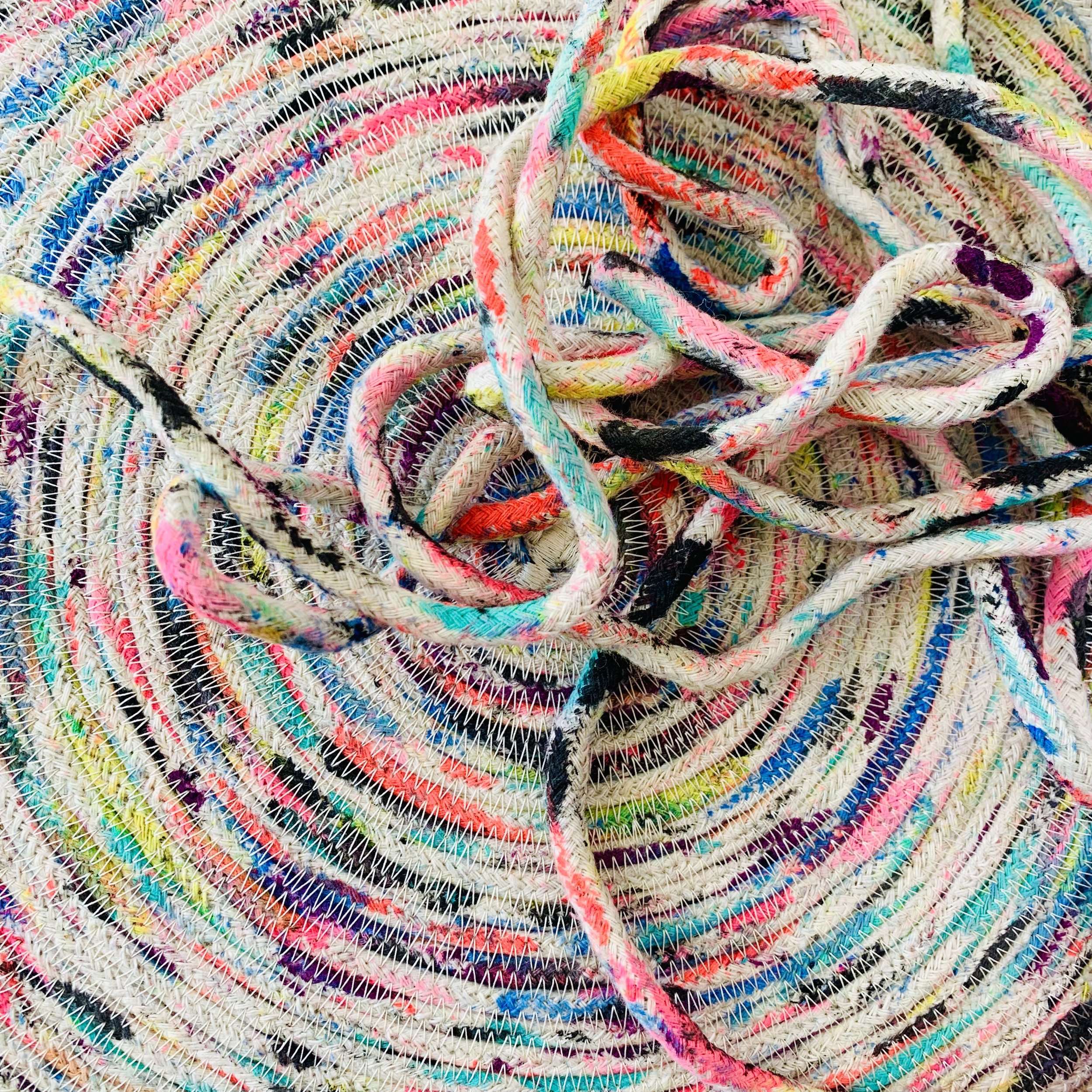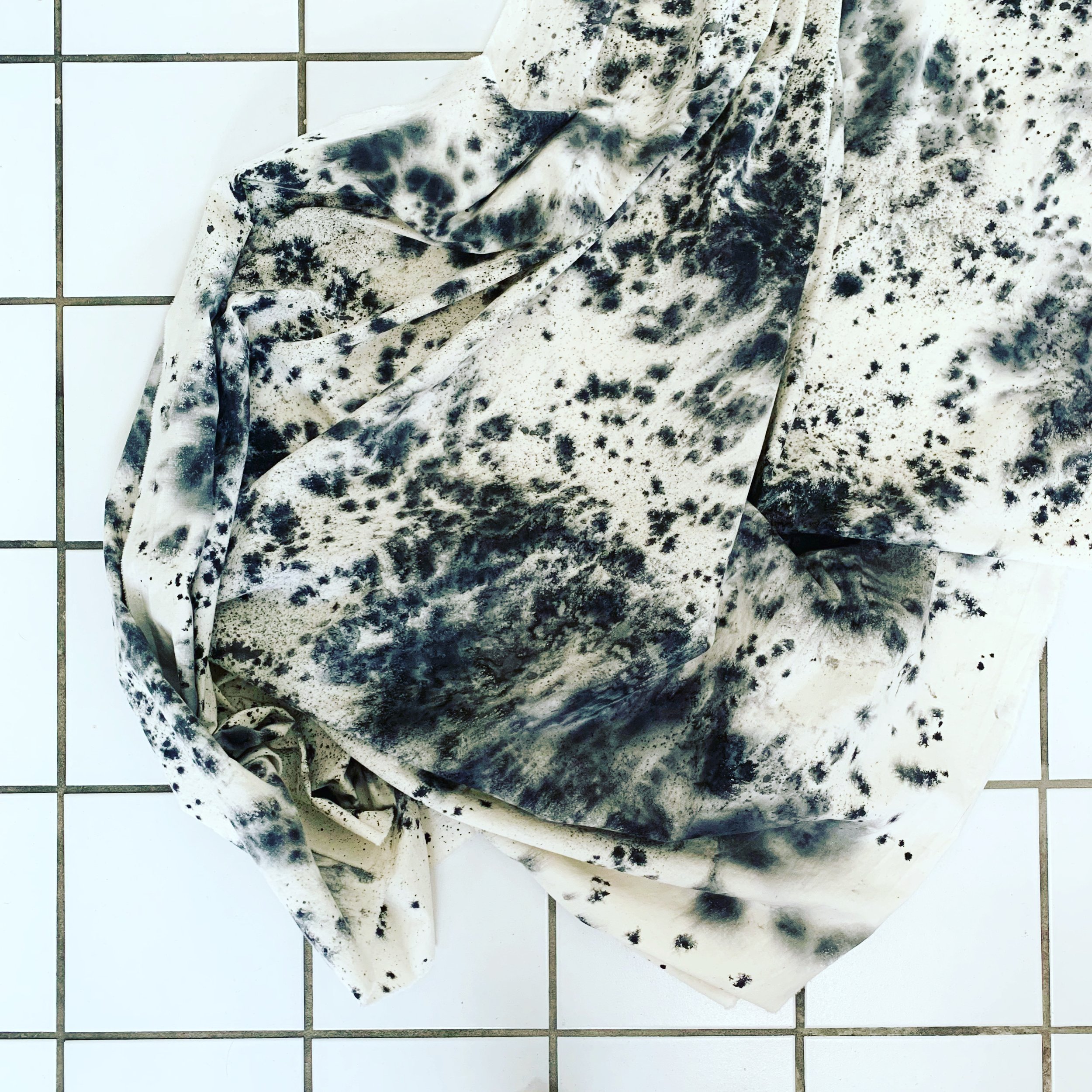How do I choose colors?
How do I decide what colors to put together in my quilts or other work (paintings, outfits, collages)?
I get these questions all the time.
It is hard to answer these questions to answer in a concise way, in a quippy short caption on social media.
First of all, I love all the colors of the rainbow/colorwheel, in all their shades and tones and intensities. Really. All of them. They are part of my palette, a seemingly infinite array of toys to play with in my art.
I love to “play with color”, observing how colors interact with one another visually.
When it comes to fabric, colors typically interact by sitting side by side or in concert with other colors in a grouping. When constructing a quilt, or perhaps a textile collage, I start by pairing two colors or pieces of fabric and seeing if I like the conversation they are having with one another from a color perspective, taking into account matters of intensity/saturation, value, and relationship on the color wheel. I don’t reference an actual physical color wheel anymore, I have mentally conceptualized where colors sit in that framework and I more than often just let my eye/brain and intuition/emotions guide me toward a pairing that feels “right”. What’s “right” is what’s “right” to ME, as color is personal and subjective to the maker and the observer.
If I am painting fabric or just painting in general, there are different considerations at play because paint can be transparent or opaque, and if the paint is transparent, colors are able to interact with one another and with any color of fabric or paper that is used as a ground. Some really interesting colors and pairings start to emerge in the layering of these colors. Transparent paints seem to sink into the surface and into one another and the opaque paints sit on the surface. Using the different opacities together on one piece of fabric together can be really exciting and I often love playing with them both.
I very much like color pairings that give me a visual jolt, a little brain buzz, something that makes me slightly uncomfortable or that makes the hairs on the back of my neck stand at attention. Maybe that’s dopamine? Whatever it is, I live for that jolt, that relationship between colors that gives me a physical reaction.
Yes, this often means using saturated color. But I am also acutely aware that variety is good, so I work on building variety in quilts with variations in color, as well as giving a lot of attention to giving my quilts depth with variations in value. Lights and darks. The light values advance and the dark values recede, giving the surface a feeling where some sections drop out while others almost glow. I don’t like a sense of flatness in my quilts, it gives me a visceral feeling of deadness and I try to avoid it.
Most of my quilts/work is very simple in construction, leaning heavily on repeated blocks and shapes that are probably pretty “traditional” in nature. I.e., simple blocks like log cabins where I can vary the colors in every center, log, or round, and see how the colors interact as the block builds out from the first pairing, and how all the colors work together as the block or piece increases in size. Then when I am putting all the blocks together I consider where to place each block in relation to all the other blocks, trying to avoid the same colors touching anywhere or clumping of colors and similar looking blocks. I’m trying to create a field of color. All this to say, there’s a method to the relative madness.
I choose colors for my pieces in an improvisational way. I make the decisions in the moment and I don’t ever plan out a quilt beforehand, except to land on what block or shape I want to work with from the jump. Sometimes even that changes as I proceed.
Some of the quilts or other work I make do focus tightly on a particular colorway. This might be a time when I think more directly about relationships on the colorwheel, choosing colors that are perhaps analogous for visual variety and continuity but also thinking about a color that’s complimentary or even a little clashing, to add in that sense of unease, to give that jolting feeling.
I also definitely have certain pairings I get stuck on/obsessed with for long periods of time and colors I tend to use more than others. For quite a while I was obsessed with electric blue and pink, which I often paired with reds and purples. Those are all analogous. I often use a lot of green for reasons I cannot quite discern. I like pairing colors with black and/or white as well. Again, contrast. A sense of grounding, but also a graphic quality.
Neons are a lot of fun, it’s the jolt factor turned up to 11. Best used sparingly but it’s also fun to go overboard sometimes, too, because why not?
Advice? I definitely have some.
Honestly, I like doing what I’m advised not to do, just to see what happens. Going overboard with color or fabric is pretty safe, compared with say, jumping off a cliff without a parachute. It’s just color. It’s just fabric. There’s everything to gain and nothing to lose when you experiment with color and fabric. JUST DO IT.
In teaching, learning, and working and talking with others and observing my own growth over time, I have come to the conclusion that working with color or being comfortable with working with color is a learned skill, and more often than not, it can feel hard when we get in our own way and overthink our choices, when we become paralyzed by choice or paralyzed by what we think others might think. Or when we are overly influenced by what society or trends dictate.
None of that shit really matters.
Confidence matters. What your heart and guts say matter. Get out of your own way and take chances and make choices and stand by them. Be wiling to try and be willing to make “mistakes”. Be open to experimentation, to trying and seeing what happens.
At some point, a deftness with color clicks in, and it’s a shift that often happens gradually, without fanfare. The understanding is internalized and isn’t a struggle. You learn to trust yourself and your choices.
How do you approach color in your own work?




















